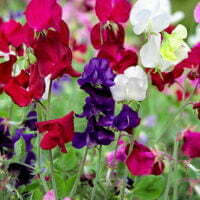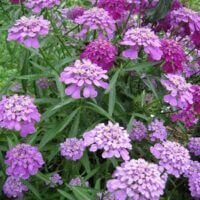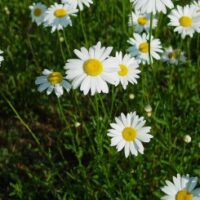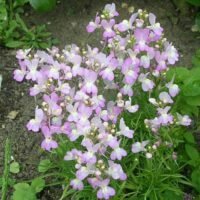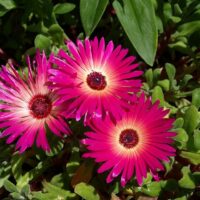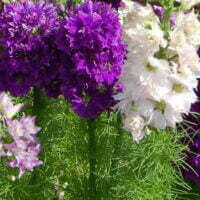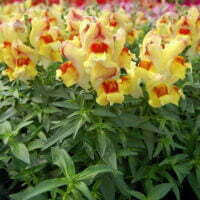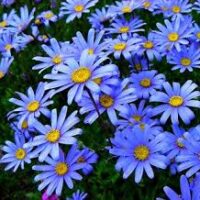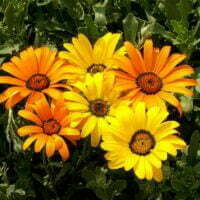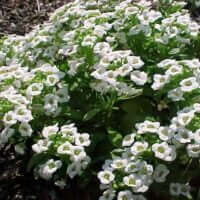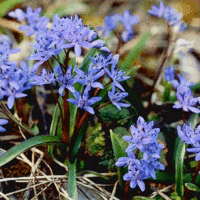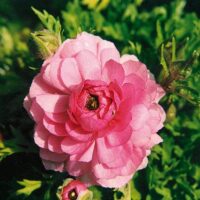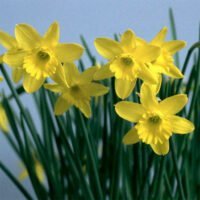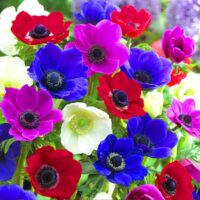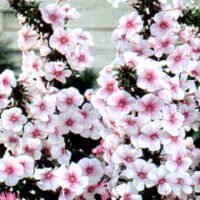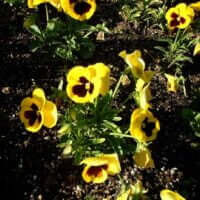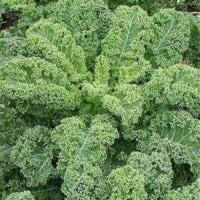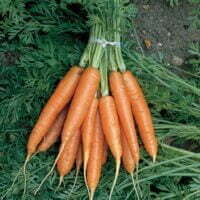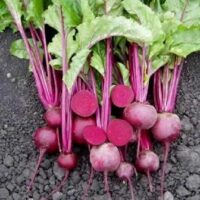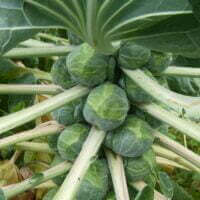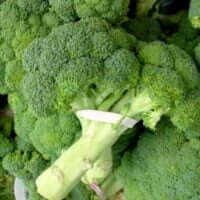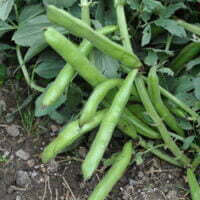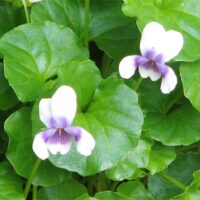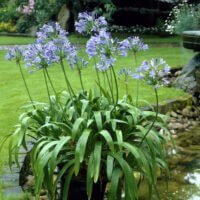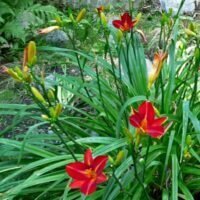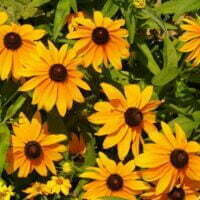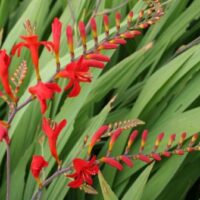What to do in your garden during April
The end of summer is drawing near, but the late summer garden still has plenty to keep the boredom at bay. Follow these tips and pointers to help your garden look its best this April.
Plant & Sow
Annuals
Frost-free regions in South Africa can sow the following seedlings in trays now:
-
 Calendula officinalis (Pot marigold)
Calendula officinalis (Pot marigold) -
 Lathyrus odoratus (Sweet pea,)
Lathyrus odoratus (Sweet pea,) -
 Senecio x hybrids (Florist’s cineraria, ragwort, groundsel)
Senecio x hybrids (Florist’s cineraria, ragwort, groundsel) -
 Iberis umbellata (Candytuft)
Iberis umbellata (Candytuft) -
 Chrysanthemum species (Annual chrysanthemum)
Chrysanthemum species (Annual chrysanthemum) -
 Linaria maroccana (Toad flax)
Linaria maroccana (Toad flax) -
 Dorotheanthus bellidiformis (Mesembryanthemum (mesemb), Livingstone daisy)
Dorotheanthus bellidiformis (Mesembryanthemum (mesemb), Livingstone daisy) -
 Consolida ambigua (Larkspur)
Consolida ambigua (Larkspur) -
 Antirrhinum majus (Snapdragon)
Antirrhinum majus (Snapdragon) -
 Felicia bergiana (Dwarf felicia, kingfisher daisy)
Felicia bergiana (Dwarf felicia, kingfisher daisy) -
 Arctotis acaulis (Tufted arctotis,marigold)
Arctotis acaulis (Tufted arctotis,marigold)
- Sow sweet peas now and throughout April.
- Prepare the soil well, at least a week ahead by working in some well-rotted compost and a handful or two of bone meal per square meter. Erect a support structure prior to sowing to avoid later inconvenience.
- Namaqualand daisies, Dimorphotheca aurantiaca can be sown throughout the country.
- Plant Alyssum and Amaranthus in frost-free regions.
Plant these spring flowering bulbs during April:
In dry continental and summer rainfall regions you can plant the following now:
-
 Centaurea cyanus (Cornflower)
Centaurea cyanus (Cornflower) -
 Eschscholzia californica (Californian poppy)
Eschscholzia californica (Californian poppy) -
 Primula species (Cowslip, Polyanthus, Primrose)
Primula species (Cowslip, Polyanthus, Primrose) -
 Lathyrus odoratus (Sweet pea,)
Lathyrus odoratus (Sweet pea,) -
 Schizanthus wisetonensis (Poor man’s orchid, butterfly flower)
Schizanthus wisetonensis (Poor man’s orchid, butterfly flower) -
 Cheiranthus cheiri (Wallflower)
Cheiranthus cheiri (Wallflower) -
 Linaria maroccana (Toad flax)
Linaria maroccana (Toad flax) -
 Consolida ambigua (Larkspur)
Consolida ambigua (Larkspur) -
 Phlox maculata (Meadow phlox)
Phlox maculata (Meadow phlox) -
 Viola wittrockiana (Pansy)
Viola wittrockiana (Pansy) -
 Viola cornuta (Viola)
Viola cornuta (Viola)
Herbs and Vegetables
Sow these herb and vegetable crops during April:
-
 Brassica oleracea var. sabellica (Kale)
Brassica oleracea var. sabellica (Kale) -
 Daucus carota (Carrots)
Daucus carota (Carrots) -
 Brassica oleracea var. capitata (Cabbages)
Brassica oleracea var. capitata (Cabbages) -
 Beta vulgaris var. esculenta (Beetroot)
Beta vulgaris var. esculenta (Beetroot) -
 Brassica oleracea var. botrytis (Cauliflower)
Brassica oleracea var. botrytis (Cauliflower) -
 Brassica oleracea var. gemmifera (Brussels sprouts)
Brassica oleracea var. gemmifera (Brussels sprouts) -
 Brassica oleracea var. italica (Broccoli)
Brassica oleracea var. italica (Broccoli) -
 Vicia faba (Beans (broad))
Vicia faba (Beans (broad))
Continue sowing salad crops, remember to sow in regular successions to ensure they mature in accordance with harvesting requirements.
Shrubs and Perennials
All of these perennials can be planted in April:
-
 Viola hederacea (Australian violet)
Viola hederacea (Australian violet) -
 Strelitzia reginae (Bird-of-paradise flower; crane flower)
Strelitzia reginae (Bird-of-paradise flower; crane flower) -
 Agapanthus africanus species (African lily)
Agapanthus africanus species (African lily) -
 Hemerocallis species (Daylily)
Hemerocallis species (Daylily) -
 Rudbeckia hirta ‘Marmalade’ (Gloriosa daisy)
Rudbeckia hirta ‘Marmalade’ (Gloriosa daisy) -
 Crocosmia masonorum (Montbretia, golden swans)
Crocosmia masonorum (Montbretia, golden swans) -
 Alstroemeria aurea (Peruvian lily,Inca lily)
Alstroemeria aurea (Peruvian lily,Inca lily)
- April is the month for planting trees and shrubs. Mix in compost and a handful of bone meal and water well.
- View one of our regional maintenance guides for more accurate suggestions.
Garden Maintenance
General Garden Maintenance
- Feed pelargoniums and spray against rust where necessary.
- Lift and divide white arum lilies and irises after they have finished flowering.
- Feed the lawn and mow if needed.
- Fertilize roses and prune them lightly for lovely autumn blooms.
- Spray regularly against black spot and mildew.
- Control ants, as they introduce aphids and scale to your plants.
- Make cuttings of Azaleas, Fuchsias, Hibiscus, Camellias and Impatiens.
- Finish planting Nerine bulbs.
- Annuals, Roses, and perennials like geraniums, daisy bushes and lavender need to be deadheaded regularly to promote growth and encourage flowering.
- Phlox and Catmint also respond well to deadheading.
- Remember to de-bud Dahlias at regular intervals.
- Hedges, standards or “lollypops”, screens and topiaries need to be pruned regularly to keep them neat and in shape.
- Ensure Chrysanthemums well supported and feed them every second week with a water-soluble fertilizer.
- Fertilize and water Pelargoniums, Cannas, Gladiolus and Dahlia well and repeat feeding every second week or so.
- Prune Acanthus mollis down to ground level and mulch well.
- Check Dahlias and Hydrangeas for red spider mite.
- Arum lilies, Irises and Cannas can still be divided and replanted this month.
- Tip and semi-hardwood cuttings can be made from the spring growth of Rhododendrons (Azalias) and Camellias.
- Start watering Camellias well and mulch around but not against the stems.
- Spray grapes for mildew if necessary.
- Water Strawberries, Mulberries, Guavas, Pawpaws, and Citrus well.
Watering
- Water all trees well once a month during dry weather and trim any branches that have been broken by wind or hail.
- Continue to feed your annuals with a liquid fertilizer every second week.
- Water the entire garden well during dry periods and pay special attention to the roses, water them nice and deep at least once a week.
- To minimize your gardens water requirements follow these tips:
- Refrain from watering during mid-day.
- Water thoroughly and deep at less frequent intervals rather than a quick splash on a more regular basis.
- Though it is often tempting remember not to turn or “cultivate” the soil as this invites evaporation and stimulates weed seed germination.
- Consider putting up a rainwater tank this rain season, as a wide variety of vegetables and container-grown plants give best results if watered with rainwater.
- Keep the garden well mulched.
Lawn
- Mow if needed and water once a month.
- Feeding is no longer needed
- Protect the roots from root burn by raising the mower blades
Weeds
- Remove weeds from the lawn by applying a broad-leaf weed-killer, weeds in the garden bed are best removed by hand before they flower and set seed.
- Treat weeds in the driveway and paving with boiling water on a hot day, remove them by hand make use of a number of no- selective weed-killers available on the market. – avoid spraying on windy days and strictly follow the dosage and package instructions.
- Minimise weeds by applying mulch and weed guard or landscape fabric and refrain from turning or “cultivating” the soil.
Pests and Diseases
Spray regularly where necessary to keep the garden free of pests. – There are a number of organic products and remedies available.
For more accurate garden maintenance tips in your climate visit this link and select the most suitable region.



